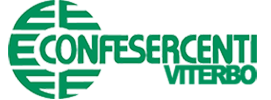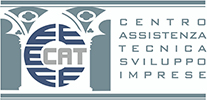If a company is healthy, the total assets will be larger than the total liabilities. The residual amount left to the owners is known as shareholders’ equity and is represented by a company’s shares. This total reflects the assets conveyed to the business in exchange for capital stock. For Kellogg, that figure is $543 million, the amount received from its owners since operations first began. Stockholders’ equity is the remaining assets available to shareholders after all liabilities are paid. It is calculated either as a firm’s total assets less its total liabilities or alternatively as the sum of share capital and retained earnings less treasury shares.
Since treasury stock is not currently owned by stockholders, it should not be included as part of their worth. Therefore, the value of treasury stock shares is subtracted out to arrive at total stockholders’ equity. The dollar amount of common stock recognized by a business is stated within the equity section of the company balance sheet. The balance sheet includes information about a company’s assets and liabilities. Depending on the company, this might include short-term assets, such as cash and accounts receivable, or long-term assets such as property, plant, and equipment (PP&E). Likewise, its liabilities may include short-term obligations such as accounts payable and wages payable, or long-term liabilities such as bank loans and other debt obligations.
- On a company’s balance sheet, common stock is recorded in the “stockholders’ equity” section.
- The downside of the preferred stock is that preferred stockholders do not have a right to vote.
- For example, assume a company issues 100 shares with a stated value of $10 per share, and investors purchase all 100 shares at $15 per share.
- For example, if a company has received $120,000 from issuing shares of common stock and has paid $10,000 in dividends, the book value of common stock would be $110,000.
- To calculate the additional paid-in capital, subtract the total par value of the common stock from the total amount of cash that the company has received from issuing the shares.
- Assets are things that could increase the value of a company over time, while liabilities are debts that must be paid or goods and services obligations that must be fulfilled.
The company doesn’t have to pay the full loan in the upcoming year, but it does have to pay a certain amount. Not all companies will list this liability and some will lump it with the current debt that we talked about in the previous section. Investors contribute their share of paid-in capital as stockholders, which is the basic source of total stockholders’ equity.
How Do I Use Common Stock to Vote at Company Meetings?
A company will have a schedule that outlines its outstanding debt, including interest expenses, and how much the company must pay per period. Adam Hayes, Ph.D., CFA, is a financial writer with 15+ years Wall Street experience as a derivatives trader. Besides his extensive derivative trading expertise, https://www.wave-accounting.net/ Adam is an expert in economics and behavioral finance. Adam received his master’s in economics from The New School for Social Research and his Ph.D. from the University of Wisconsin-Madison in sociology. He is a CFA charterholder as well as holding FINRA Series 7, 55 & 63 licenses.
- Therefore, the company currently has authorized 5,000 shares and has 2,000 shares issued and outstanding.
- Despite the difference in voting rights, different classes usually enjoy the same rights to the company’s profits.
- Now before knowing further about common stocks, have a look at a balance sheet.
- The outstanding stock is equal to the issued stock minus the treasury stock.
If the stock sells for $10, $5 million will be recorded as paid-in capital, while $45 million will be treated as additional paid-in capital. For example, the share is issued at the cost of $100, and its par value is $20, which means you should have a minimum amount of $20 to purchase the shares. Amortization is the process of taking an expense and expanding its cost over the life of the expense. Stockholders’ equity is also referred to as shareholders’ or owners’ equity. Before we dive in, consider the stockholder’s equity section from Realty Income Corporation’s 2014 balance sheet.
The value of common stock issued is reported in the stockholder’s equity section of a company’s balance sheet. In addition to common stock, many corporations issue preferred stock to finance their operations. When a person buys the preferred stock of a corporation, he is known as preferred stockholder of that corporation. The rights and opportunities of a preferred stockholder are essentially different from those of a common stockholder. On the other hand, capital issued at PAR was the source of the first credit records. The second credit in the aforementioned transaction, in a similar manner, reflects the credit impact of the sum received in excess of the PAR value of the common stock.
Finding the Additional Paid-in Capital
The additional paid-in capital is the amount of cash received from the sale of stock shares in excess of the par or stated value of the shares. For example, assume a company issues 100 shares with a stated value of $10 per share, and investors purchase all 100 shares at $15 per share. The company’s additional paid-in capital is $5 per share multiplied by 100 shares. The https://accounting-services.net/ company records $500 in additional paid in capital in the stockholder’s equity section of its balance sheet. Common stock, as its name implies, is one of the most ordinary types of stock. It gives shareholders a stake in the underlying business, as well as voting rights to elect a board of directors and a claim to a portion of the company’s assets and future revenues.
Stockholders’ Equity and the Impact of Treasury Shares
The total amount of stock currently in the hands of the public is referred to as the shares “outstanding.” Shares are sometimes bought back from stockholders and recorded as treasury stock. According to the information provided, Kellogg has acquired nearly thirty-seven million treasury shares. Although not mentioned directly, Kellogg now has only 382 million shares of common stock outstanding in the hands of the stockholders (419 million issued less 37 million treasury shares). This number is important because it serves as the basis for dividend payments as well as any votes taken of the stockholders. Additional paid-in capital is also referred to as paid-in capital in excess of par on the balance sheet.
Dividend yield tells you how much money a company gives to its shareholders. Common and preferred stock both let investors own a stake in a business, but there are key differences that investors need to understand. By issuing securities or reducing ownership stakes, the money was obtained. On the other hand, the transaction’s credit impact is reflected in the equity balance. In addition to the classes of shares listed above, there are additional categories to describe shares according to their place in the market.
Is common stock on the balance sheet?
Previously outstanding shares that are bought back by the company are known as Treasury shares. Capital stock can be issued by a company to raise capital to grow its business. Issued shares can be bought https://accountingcoaching.online/ by investors—who seek price appreciation and dividends—or exchanged for assets, such as equipment needed for operations. Common stock is usually listed under “Stockholders’ Equity” on a balance sheet.
Definition of Common Stock
In contrast, if it is negative, it means the business has a short life span or cannot survive in the long term. For the survival of a business, assets should be more than liabilities. If a company borrows money but doesn’t have to pay it back in the short term, it’s accounted for here.
Accounting for common stock issues
When common stock has an assigned par or stated value, multiply the number of shares outstanding by the par or stated value per share. This amount is recorded as common stock in the shareholder’s equity section of a balance sheet. The book value of common stock represents the total amount of equity that shareholders have in the company. To calculate the book value of common stock, subtract any dividends paid to shareholders from the total amount of capital received from issuing shares of common stock.
However, a company with a negative shareholders’ equity is riskier to invest in than a company with a positive equity value. Long-term debt is primarily included in the long-term liabilities section. However, any money that a company owes on that debt within the next year will be included here. For example, say that a company takes out a loan that’s 10 years long.




